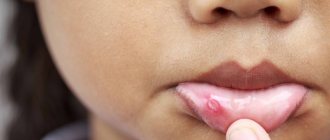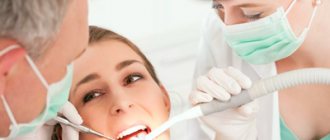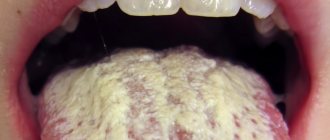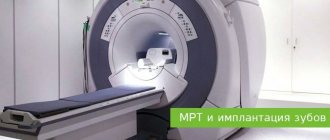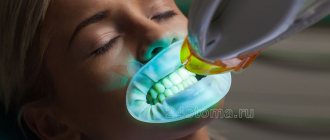Symptoms and signs
Candidiasis in men and women manifests itself in three forms:
- acute candidiasis. Characterized by a bright current;
- chronic. In this case, relapses are replaced by remissions;
- carrier status When diagnosing candidiasis, a fungus is detected, but the person has no symptoms. In this case, treatment of candidiasis is not required.
Symptoms and treatment of candidiasis depend entirely on the form of the disease. There are several varieties depending on location.
Candidiasis of the reproductive and urinary system is one of the most common types. It is also called urogenetic. Most often in women, vaginal candidiasis (vaginal candidiasis) occurs. The main characteristic feature is a cheesy whitish discharge with a sour odor. Vaginal candidiasis (vaginal candidiasis) during pregnancy is also possible, and is a fairly common and unpleasant phenomenon. By the way, the child is often born with thrush after this. In men, this form can also appear. In this case, the symptoms of candidiasis are film-like plaque on the genitals. Also characteristic are redness of the mucous membranes and skin, discomfort, itching, and burning when urinating.
Oral candidiasis (oral candidiasis, oral candidiasis) is another common type of disease. Most often it is diagnosed in young children, although cases in adults are not excluded. Oral candidiasis usually occurs in an acute form. It causes a lot of discomfort and trouble to the patient. Symptoms of oral candidiasis:
- whitish plaques and dots;
- redness of the mucous membrane;
- small sores that bleed;
- whitish coating;
- swelling of the tongue, tonsils.
If you do not take medications and remedies for candidiasis in a timely manner, then the infection will subsequently spread to the organs of the digestive tract, vocal cords, and nasal passages.
Candidiasis of the upper gastrointestinal tract develops due to the presence and spread of infection from the oral cavity. A striking example is candidiasis of the esophagus and stomach. In this case, vomiting, heartburn appear, appetite worsens, discomfort and pain in the chest are felt, and problems with swallowing appear. Symptoms and treatment of intestinal candidiasis are interrelated. Typically, this form occurs due to improper and uncontrolled use of antibiotics, especially if the immune system is weakened. This form is also common. In this case, as with esophageal candidiasis, appetite worsens and vomiting is possible. The release of gases also increases, food digestion worsens, and pain is felt. The patient may lose weight dramatically. He suffers from diarrhea, chills, and fever. Itching in the anus is also possible.
The pulmonary form of candidiasis is secondary. It occurs due to inflammatory processes in the respiratory organs, purulent infections, and tuberculosis. Candida fungus enters the mucous membranes of the bronchi. Diagnosing this condition is extremely difficult. The main signs of pulmonary candidiasis:
- weakness;
- general malaise;
- cough with sputum production, and there are purulent impurities in it;
- pain in the lungs;
- increase in body temperature;
- voice change.
Signs of ear candidiasis:
- the presence of gray or whitish discharge;
- severe itching inside the ear;
- the presence of weeping wounds.
What does eye candidiasis look like:
- increased lacrimation;
- itching;
- redness of the mucous membrane of the eyes;
- plaque on the eyelids;
- blurred vision;
- purulent discharge from the eyes;
- sensation as if there is a foreign object in the eye.
Candidiasis can appear on the palms of the hands, under the arms, under the breasts, between the fingers, and on berries. The infection quickly spreads to neighboring areas, creating large lesions that are characterized by a dark red hue. Cutaneous candidiasis is characterized by the appearance of white crumbs from keratinized skin particles, cracks, and blisters. The affected areas are very itchy.
Candidiasis also develops on the nails, especially on the toes. This is a very common form. At the same time, the nail turns yellow and begins to peel. Lumps appear on the nail plate. The cushion nearby swells, becomes red, and ulcers may appear.
Are you experiencing symptoms of candidiasis?
Only a doctor can accurately diagnose the disease. Don't delay your consultation - call
Candidiasis in men
Representatives of the stronger sex are much less susceptible to candidiasis compared to women. This is due to the anatomical characteristics of the male body.
When affecting the male body, thrush manifests itself as follows:
- There is swelling and redness in the area of the glans penis and foreskin.
- There is a burning sensation and pain when urinating.
- During an erection, intimate contact and after it, pain occurs.
- A white cheesy coating with a sour odor appears.
The appearance of symptoms of candidiasis in a man signals a serious malfunction in the body’s defense system.
Lack of proper treatment in men leads to the development of candidal balanitis (damage to the glans penis) and balanoposthitis (inflammation of the foreskin).
For information about the characteristics of the disease and common myths associated with thrush, watch this video:
to contents ^
Routes of infection
The amount of candida fungus can also increase upon contact with a previously infected person. For example, the causes of candidiasis in this case are as follows:
- during sexual contact (usually in this case the urogenital, vaginal or oral form develops);
- during pregnancy (in this case, the infection is transmitted from mother to child, and he/she develops symptoms of candidiasis at birth);
- during dental procedures (for example, prosthetics - in this case, an adult develops candidiasis in the mouth);
- injuries to the eyes, ears, skin (infection gets into the wounds).
Thrush during pregnancy
The development of vaginal candidiasis during pregnancy is dangerous for the expectant mother and the fetus. There is an increasing threat of the development of inflammatory processes during pregnancy, postpartum complications, and infection of the fetus, which can lead to fungal infection of its organs and even death. It is possible that the baby may become infected during childbirth. Treatment of thrush in pregnant women is complicated by the ban on taking antifungal drugs orally. Local treatment with vaginal tablets and suppositories is acceptable (Pimafucin is considered the safest among them during pregnancy). All the more important is the observance of personal hygiene rules, as well as protection from stress, proper nutrition with sufficient vitamins, walks, healthy sleep, which help strengthen the natural immune defense. If signs of thrush appear in a pregnant woman, she should immediately contact an obstetrician-gynecologist in order to carry out timely, adequate treatment and avoid complications.
For diagnosis and successful treatment of vaginal candidiasis, come to the Clinical Hospital on Yauza. You can see
prices for services Make an appointment
Risk factors
Factors contributing to infection:
- uncontrolled use of antibiotics (in this case, treatment of intestinal candidiasis is especially often required), weakened immune system;
- failure to comply with personal hygiene rules;
- inflammatory and infectious processes (especially caused by bacterial infection);
- allergic reaction, wearing contact lenses (increases the risk of ocular candidiasis);
- severe stress, psychological and physical fatigue;
- sudden climate change;
- poor nutrition, diabetes and various diseases of the endocrine system;
- leaving the limbs in water for a long time (this can cause fungus on the nails).
These factors can become a trigger for the development of thrush. And before you think about how to cure candidiasis, you first need to eliminate the influence of such negative factors.
Candida mushrooms: from conditionally pathogenic to pathogenic
These oval or round unicellular microorganisms are present in the normal microflora of most healthy people. They are well protected from external factors and feel quite comfortable at human body temperature.
The very presence of Candida fungi in the body does not equate to a disease: the development of the pathological process begins if, under the influence of any factors, the fungi begin to actively multiply.
In most cases, this occurs due to decreased immunity.
The onset of the disease does not indicate a change in the properties of the fungus, but rather a change in the state of the body, in particular, a sharp decrease in its protective mechanisms.
to contents ^
Complications
Medicines for candidiasis must be taken as early as possible, otherwise the disease may become advanced and become chronic. It is dangerous due to numerous complications.
For example, due to urogenital and vaginal candidiasis, diseases of the kidneys, urinary tract, and reproductive organs develop. There may even be infertility, cervical erosion in women, urethritis and prostatitis in men. If such a disease appears during pregnancy, a miscarriage is possible.
With ear candidiasis, sepsis may develop and hearing may deteriorate. With ocular vision, vision drops sharply. With candidiasis of the digestive organs, there is a possibility of developing anemia and peritonitis.
When to see a doctor
It is necessary to contact a specialist as soon as the first suspicion of candidiasis appears. This applies to symptoms such as mild malaise, discomfort, itching, peeling of the skin, splitting of the nails, redness of the skin and mucous membranes in the mouth, groin, cheesy discharge on the genitals, burning sensation when urinating, vomiting, chest and abdominal pain, diarrhea and etc.
In case of candidiasis, which doctor diagnoses and draws up a treatment regimen for candidiasis depends on the location of the pathological processes. This could be a dermatologist, urologist, gynecologist.
Candidiasis in women
To a greater extent, genital candidiasis occurs among women: about 75% of them have experienced its symptoms at one point. In half of the women who became ill, the disease relapsed.
Candidiasis in women makes itself felt with the following symptoms:
- noticeable milky-white, curd-like vaginal discharge with an unpleasant odor;
- a feeling of itching, irritation, burning, most noticeable after urination and water procedures, as well as before menstruation;
- pain during and after intimate contact.
If a woman ignores such manifestations, the disease can spread to the area of the inguinal folds, affecting the vaginal mucosa and, in some cases, the vaginal area of the cervix.
to contents ^
Myths and dangerous misconceptions in the treatment of candidiasis
Myth 1. Thrush is normal, everything will go away on its own. In fact, if the disease is not treated, it will become chronic and cause other health problems.
Myth 2. Thrush occurs only in sweet tooth lovers. Wrong, in fact it all depends on the immune system. Sweets are allowed, but in moderation.
Myth 3. Fermented milk products are the best prevention of thrush. Some girls even soak cotton pads in kefir and wipe problem areas. In fact, it is not worth wasting time on such folk remedies.
Myth 4. The disease can be treated with just 1 tablet. In fact, a comprehensive approach is required.
Diagnosis and treatment of systemic thrush
Very often, systemic candidiasis is diagnosed in advanced stages, when the infection has penetrated deeply into the body and affected several organs. In this case, drug therapy will not help completely get rid of the fungus. At any period of life, the patient may again encounter a fungal disease and its consequences.
If you have suspicious symptoms, you should make an appointment with your doctor. During the initial appointment, the specialist will ask about disturbing symptoms, collect all important data, and conduct a visual examination. To clarify the diagnosis, a referral is given for a comprehensive diagnostic examination.
Laboratory diagnostic procedures play a leading role in determining and identifying the causative agent of systemic candidiasis. They allow you to identify the pathogen in the blood and other biological fluids of the body:
- sputum;
- effusion formed in the abdominal cavity;
- feces;
- exudate released from wounds on the body.
The laboratory assistant takes the necessary samples, after which in the laboratory, using special equipment, he identifies the type, quantity and extent of distribution of the microorganism.
To confirm the diagnosis, the following diagnostic measures are prescribed:
- Repeated blood donation for seeding and cultivation in a nutrient substrate.
- Biopsy of affected organs.
Additionally, instrumental research methods are prescribed that will help assess the general condition of the body and the functioning of internal organs:
- radiography;
- endoscopy;
- gastroscopy;
- magnetic resonance imaging (MRI);
- computed tomography (CT);
- ultrasonography.
Treatment of systemic candidiasis is selected individually and is aimed at solving the following problems:
- Elimination of the root causes that provoked a malfunction of the immune system and activation of the growth of a fungal infection.
- Destruction of the causative agent of visceral candidiasis.
- Stimulation of the body's immune defense, involving the use of immunomodulators, vitamin and mineral complexes.
- Normalization of the functioning of affected internal organs.
- Restoration of beneficial microflora of the body.
To destroy a fungal infection, antimycotic drugs are prescribed, the dosage and duration of use of which is determined by the doctor individually, taking into account the degree of neglect, the severity of the disease and the general health of the patient.
The following systemic antifungal drugs will help quickly and effectively destroy a fungal infection:
- "Amphocetrin B";
- "Flucytosine";
- "Fluconazole";
- "Miconazole";
- "Itraconazole"
In case of complicated course of systemic candidiasis, in addition to antifungal therapy, solutions of potassium and sodium iodide, antigastamines, and a polyvalent vaccine based on Candida cultures are prescribed.
Throughout the entire period of treatment, the patient must remain in the hospital under the constant supervision of medical staff and the attending physician. This allows you to monitor the dynamics of therapy in detail and, if necessary, adjust the therapy regimen. After the disease is defeated, the patient must follow the rules of prevention throughout his life to prevent relapses.
Prevention
In order not to think later about how to treat candidiasis, it is recommended to regularly prevent candidiasis. To do this, you need to switch to a healthy lifestyle, strengthen your resistance to any stress, infectious diseases, and avoid hypothermia. Hardening, consuming vitamin and mineral complexes, and a proper and balanced diet will also benefit. It is also important to promptly treat any diseases. Diet for candidiasis is also important: avoiding sweets, bread and confectionery, fatty foods, and fried foods. It is better to eat boiled and steamed food, as well as more fresh fruits and vegetables.
Causes of candidiasis
Intensive reproduction of the fungus can be provoked by various factors:
- Prolonged hypothermia or, conversely, being in a climate that is too hot and humid.
- A disease, especially if antibacterial drugs are used in its treatment.
- Severe stress.
- Changes in hormonal levels (with endocrine disorders, use of hormonal drugs, during pregnancy).
- Choosing underwear that is the wrong size or made from synthetic materials.
to contents ^
